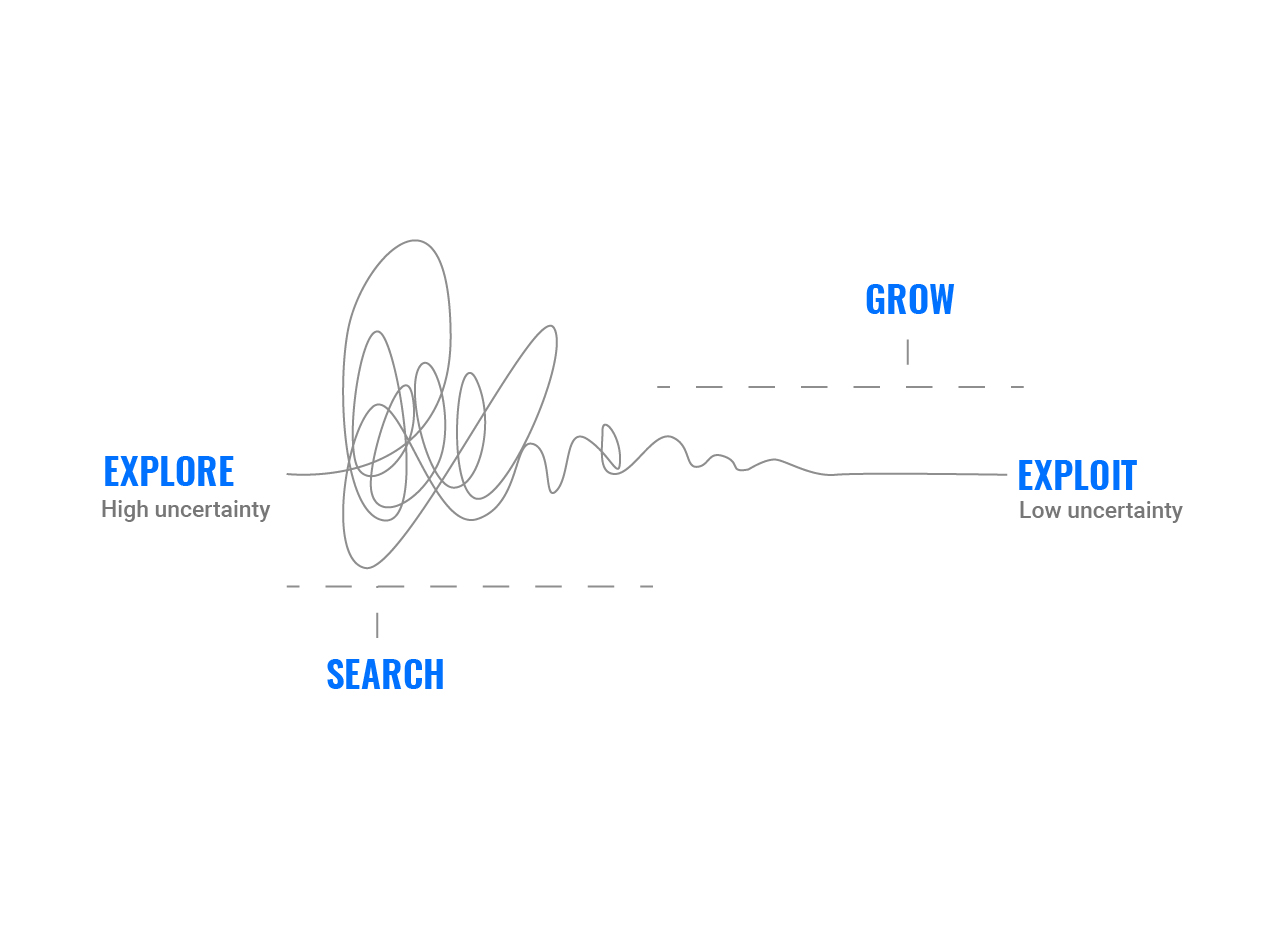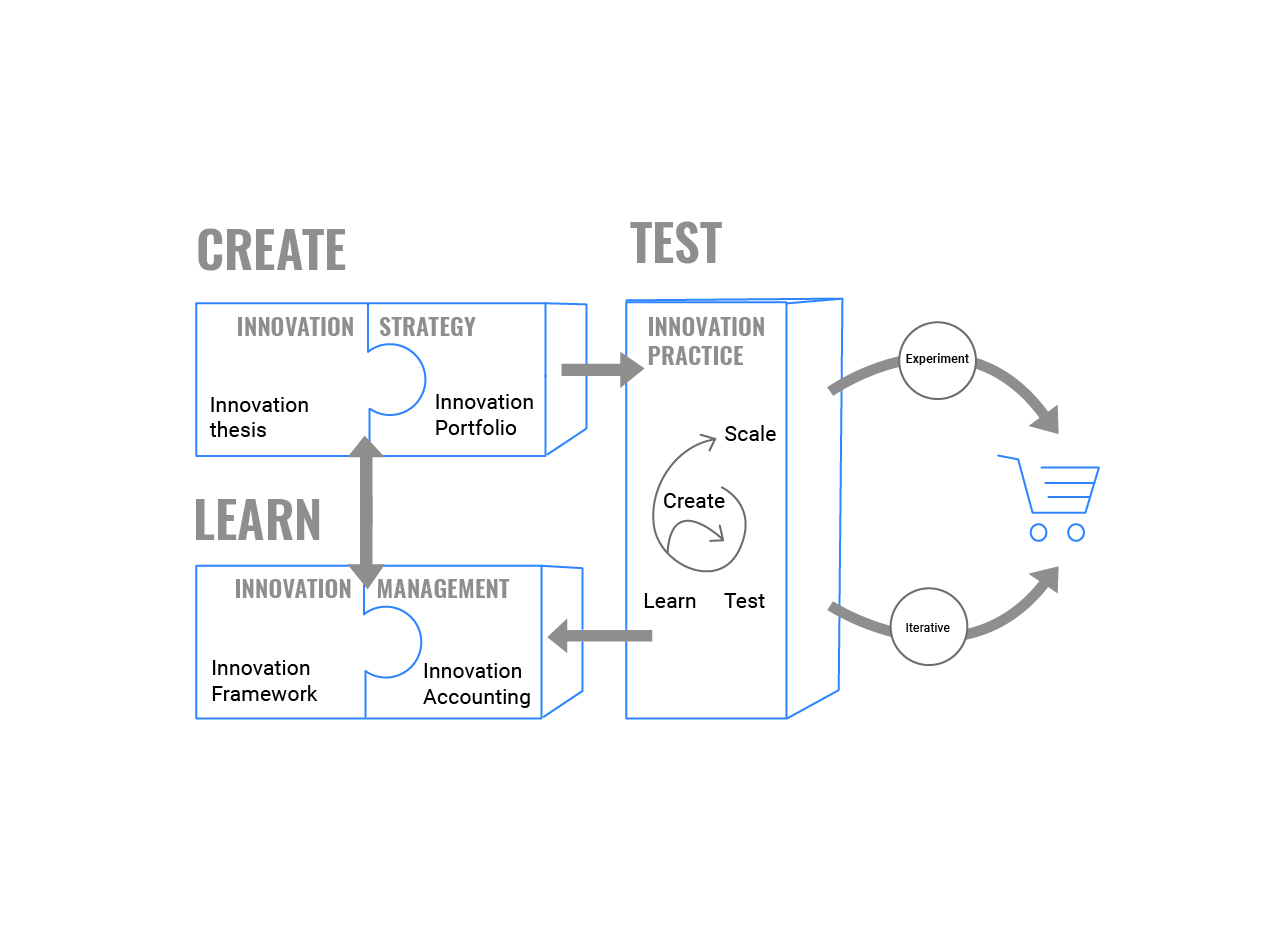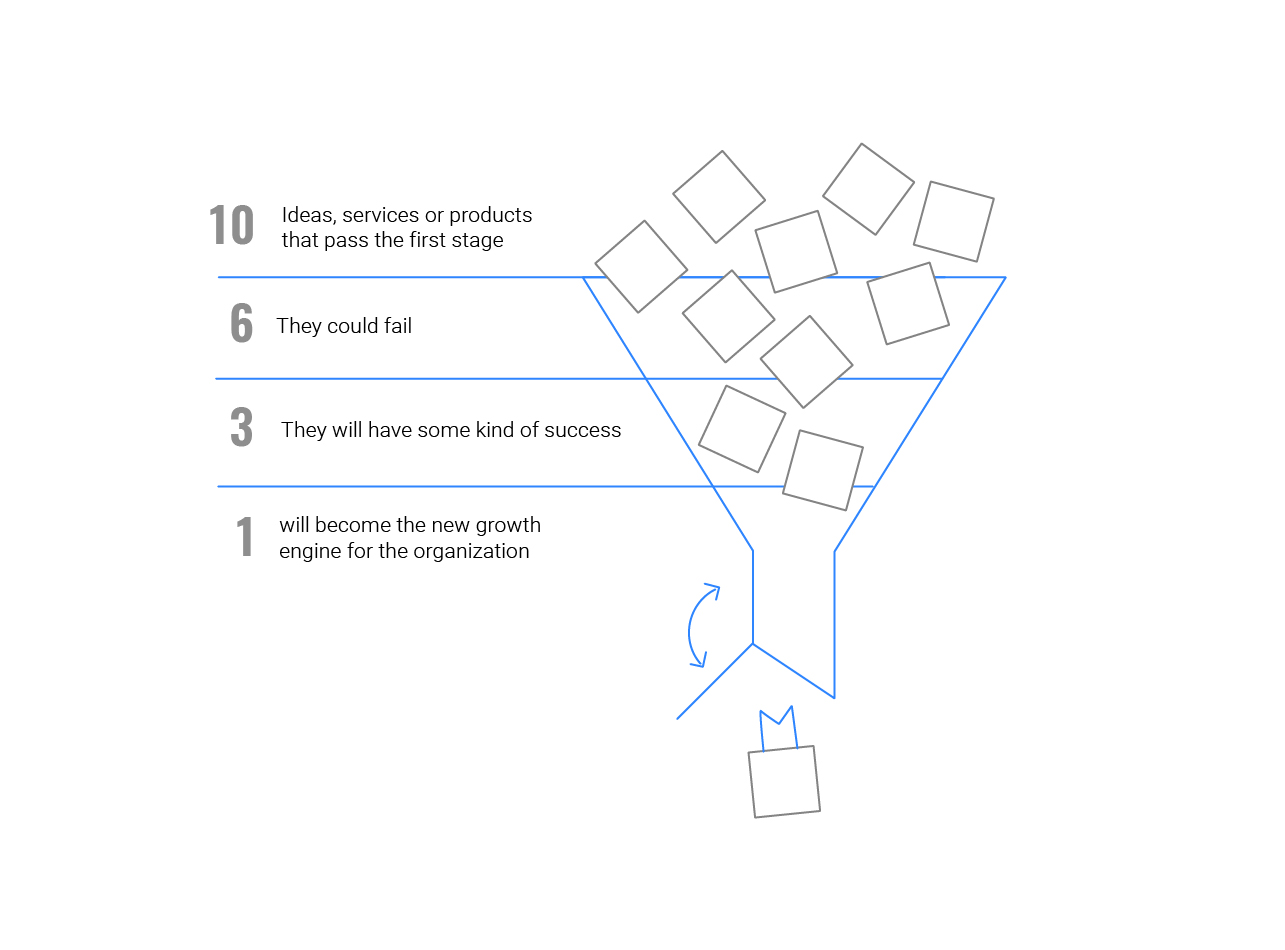In today’s business world, business digital transformation is essential to remain competitive. This process involves adopting new technologies and methodologies to improve operational efficiency and foster innovation. By balancing the exploitation of existing business models with the exploration of new opportunities, organizations can discover new ways to create value and effectively respond to the ever-changing market demands.
Exploitation versus exploration
Business digital transformation is not magic; it is the ability to culturally transform an organization, including the appropriate resources. The key lies in exploration. Exploring involves dedicating people and resources to investigate and experiment in areas, approaches, sectors, and paths that do not necessarily guarantee immediate returns. Yes, this creates tension because while we explore, we are not exploiting the established service model. We are not limited to performing tasks considered useful.

It is a significant challenge to commit time and resources in the pursuit of innovation, knowing that every euro is valuable and must be justified. Being innovative means venturing into unknown territories without certainty of results. However, we cannot generate good ideas unless we allow ourselves to have many, even if some turn out to be failures. Therefore, to innovate, we must dare to play, accepting uncertainty as a path to knowledge and improvement through practice.
Why is it crucial to explore?
We live in a world where demand is not saturated. On the contrary, there is an oversupply that can lead users to seek solutions elsewhere, leaving our own proposals aside. Although it may be hard to believe, the excellence, relevance, and quality of our services to access information are no longer enough. Competitors exist, especially in sectors where we have not yet reached non-users. A non-user is someone who does not know the utility of our services to meet their needs. Do we not want to reach them?
In summary, we explore to retain our users and expand our horizons to those who do not yet know us. To enrich our exploration, we will address two approaches: understanding and resolving the needs and challenges of non-users, both internally and externally.
Non-users: Where does it hurt them?

When we talk about the pain points of non-users, we refer to the problems they want to solve and the goals they strive for. If we identify them, the next question is how we can provide solutions or generate opportunities.
Under this approach, we propose to capture problems and opportunities with an example:
Example:
First, we identify the jobs, actions, tasks, etc., that they perform in their day-to-day. For example, a professional who designs teapots needs inspiration from images of this type of object and cannot visit all centers that may have images, whether in design magazines or others. Second, we identify how and how we cannot support the professional’s tasks. Where do we stop being effective for them? We cannot assign people to search for teapot images among our center’s and others’ collections, but we have sources where they could find them, such as magazines, engravings, or others. Third, we break down all the tasks the non-user performs and identify points that can be digitized in the medium term. Technology allows us to locate objects in digitized images automatically. Fourth, we analyze the technological implications, limitations, including legal ones, and the impact on our centers. We build a use case to see if we can meet this type of non-user’s need. If we believe we should invest in this type of service with this technology, we try a first proof of concept with teapots and iterate based on the results to improve. We may also discover that it makes no sense and, therefore, can abandon the service.
Basically, we are doing the same as any startup: placing the user at the center, discovering pain points, and determining our interest in solving them through a technological base. This exploration model implies launching services to make mistakes and correct them quickly to achieve better results.
Innovation from Within: Open Innovation
Business digital transformation also implies open innovation, representing the biggest leap an organization can take. This process can involve the entire team, ensuring broad collaboration. Moreover, it requires the team to be mature enough to understand the competitive nature of the process, accepting that in any competition, some will succeed before others. This concept may be new to our work units, accustomed to different dynamics.
The implications of this form of innovation are economic, as everyone explores, and social, as “the winner takes it all.” Management must clearly understand this path. Up to this point, prudence. From a much more positive perspective, management must also know that opting for these dynamics has a transformative effect in the medium and long term and accelerates disruptive innovation processes. The results are usually good, very good!
How should such initiatives be developed?
Leadership initiates a call, typically on ambitious issues: market disruption, identification of services and trends for (non) users, user retention through new forms and attraction channels, or the incorporation of new technologies to become much more efficient or improve service. These issues have a technological aspect in which technology should play a leading role.
- The call has rules: participation guidelines, time commitment, rewards for winners, a format for collecting initiatives, and a committee to evaluate proposals.
- The call is launched, and a registration and team formation period is provided. Working alone is not allowed because innovation is not a one-person journey.
- One week is given for the submission of ideas, initiatives, or others to the committee. They validate which ones proceed to the next phase and which do not. Ideas not selected are placed in a panel and archived. Perhaps now was not their moment, but who knows in the future.
- Working groups are given three or four weeks to prototype in low fidelity, meaning prototypes with few resources and not much definition, in three areas: technology, market analysis, and necessary resources. The goal is to put ideas into black and white and understand the feasibility of what has emerged.
- A second presentation is made to the committee, and it decides whether to invest resources or not. In the case of a negative decision, we return to that panel of ideas with a broader understanding.
- Resources should be invested, not only for exploration but also for the exploitation of those valid proposals that you wish to continue with.
As you can see, we are talking about a complete process that lasts between 1.5 and 2 months. The time usually assigned to teams is approximately 20% of their working day while not being eliminated. Those groups that do not pass the cut do not continue. Therefore, it is easy to do the math. If we have 10 teams of 4 people each and only 3 enter the development phase, during this time, we will have 12 people working.
What is the profitability of such initiatives?
The expected return is that if we achieve 10 ideas, services, or products that pass the first stage, 6 may fail, 3 will have some success, and 1 will become the new growth engine for the organization.
Innovation from Outside: Frontier Innovation
Business digital transformation can also benefit from frontier innovation, which seeks to overcome the main barriers organizations face. Day-to-day dynamics, areas posing a problem for every solution. We all have usual suspects who, clinging to routine, prevent us from moving forward. Therefore, we seek innovation outside the organization with totally different approaches that can integrate into our services. We talk about companies with disruptive services that can solve problems we may not know where to start or had not even anticipated, but that will affect us in the future. These are startups.
Startups are those with scalable business models, centered on a value proposition that offers a disruptive response to the market, with a high technological component. Generally, they are emerging organizations with little track record, a totally disruptive innovation model, and eager to overcome all kinds of barriers, capable of growing if they achieve enough clients.
Conclusion
In conclusion, disruptive innovation is the key to digital transformation in organizations. Business digital transformation is about exploring new possibilities, breaking barriers, and seeking solutions outside the conventional. It involves placing the user at the center, identifying their pain points and challenges, and developing innovative proposals that generate a positive impact on their lives.
It is a challenging path but also full of opportunities to make a difference and lead transformation in our organization. Let’s not be afraid to explore, experiment, and bring our boldest ideas to life!
For more details on how digital transformation is changing businesses and how to implement it successfully, you can read How Digital Transformation Has Changed Businesses Forever (Quantion).
Author

Lluís Vicente
Head of Consulting & iX




